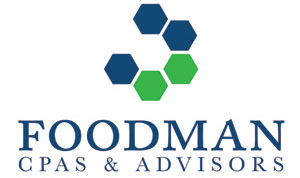Digital asset scams can occur in different ways through several different avenues. Although the ways and the avenues differ, the end result is always the same: there is a scammer that is trying to appropriate the consumer’s funds via the human-machine interaction. The Federal Trade Commission (FTC) alerts consumers that: only scammers demand payment in digital assets, no legitimate business is going to demand that digital assets be sent in advance to buy something and or to protect money, only scammers will guarantee profits or big returns and to never mix online dating and investment advice. Consumers ought to do their research before participating in the digital asset space and be aware that if it sounds too good to be true, it probably is!. That said, in order to avoid digital asset scams, consumers ought to know this:
- Tweets, texts, emails, or any other message from social media from that direct payment with digital assets are a scam.
- Fake digital assets wallets: there is malicious software that prompts the appearance of a legitimate digital asset wallet. Any interaction with a digital asset wallet that is comprised of malicious software will send digital assets to the scammer.
- Fake digital asset exchanges: beware of fake websites that could appear to be a legitimate but are not and interaction will result in the scammer having access
- Cloud mining companies: these companies hoax individuals by pretending that they are allowing the individuals to mine digital assets utilizing the mining companies cloud servers. They take the individuals’ funds and do not provide mining access.
- Initial Coin Offerings: there are scammers that create worthless tokens, promise increases in value, and then run off with the proceeds.
How do the Scammers do it? Scammers do not want their activity traced! So, they try to:
- Utilize multiple addresses and wallets: digital asset wallets create a new address for every transaction making it challenging to trace.
- Mix services: using an algorithm to mix digital assets can assist in obscuring transaction history.
- Utilize privacy coins: coins that have built-in anonymity features that can obscure amounts and addresses.
- Utilize dark exchanges: trails are broken once funds are co-mingled in an exchange – particularly a dark exchange that operates outside of the U.S.
- Chain hop: this is the process of digital assets being deposited into an exchange and then being traded for another digital assets. Tracing digital assets through multiple exchanges is difficult without data from an exchange.
- Trade digital assets for cash: trading a semi-anonymous digital asset for a totally anonymous asset (cash) is difficult to trace.
Consumers that are victims to digital asset scams ought to learn this:
- A digital asset transaction cannot be disrupted or prevented once it is initiated.
- When the digital asset resides in a “wallet”, it can only be accessed with a unique private key. Know your passwords!
- Not all digital asset transactions are private. There are digital asset transactions that are publicly available.
- There is no Regulatory Agency that oversees Digital Assets. You are on your own.
- Digital assets can be anywhere (probate and divorce proceedings, bribery and corruption, asset misappropriation, money laundering, and tax evasion), so there is a need for looking beyond the numbers.
- Beware of charity organizations or individuals requesting donations for “charity”.
If digital assets can be traced, then there is a probability that they may be recovered
A full recovery of a digital asset scam is difficult to achieve. Nonetheless, victims of digital asset scams ought to keep bank records, exchange records, accounting records, tax returns, emails and any other documentation that could assist in an event of a possible digital asset scam investigation.
Forensic Accountants can be a resource.
Forensic Accountants utilize traditional “Follow the Money” investigative tools, but with additional challenges when digital assets are involved. A Forensic Accountant could be tasked with tracing illicit digital assets transactions in order to facilitate a recovery of potential criminal proceeds. They have to search for the evidence to explain what happened to the digital assets, identify its proceeds, and the parties that have either handled or received the digital asset or its proceeds.
Are you a victim of a digital asset scam? Consider the assistance of a Digital Asset experienced Forensic Accountant. ©





